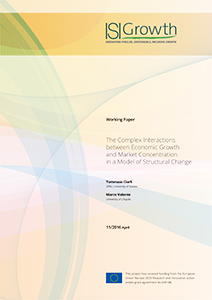We study the relation between variety, market concentration, and economic growth, along different phases of economic development which entail a number of changes to the structure of production and consumption in the economy. We focus on three aspects of structural change, which are connected and are correlated to variety, market concentration, and economic growth: (i) product quality; (ii) firms’ mark-ups; and (iii) imitation of consumer preferences for price and quality. We model the interactions among several aspects of structural change such as firm size and hierarchical structure, innovation in capital vintages, the emergence of social classes, income distribution, and consumer preferences across and within classes. We find that market concentration has a significant and positive impact on economic growth only in the presence of sufficiently large demand. The strongest effects emerge in the presence of a more skewed firm size distribution and firms producing higher priced and higher quality goods. We find also that this effect is in strongly by different aspects of structural change. Changes in the behaviour (or income) of the less wealthy income classes is crucial as is investment in new capital vintages, and the emergence of diverse income classes with heterogeneous consumption preferences. In contrast, we find that supply side product variety, cœteris paribus, has no significant effect on growth.
The Complex Interactions between Economic Growth and Market Concentration in a Model of Structural Change
Tommaso Ciarli
SPRU, University of Sussex
Marco Valente
University of L’Aquila

